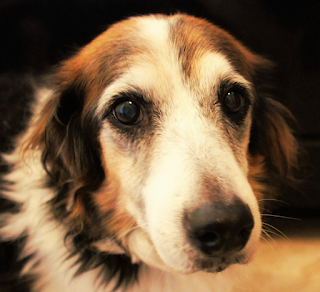WHAT
IS CAUSING MY DOG TO BE GASSY?
AIR
EXCESSIVE
BREATHING
Most gas comes from swallowed air. Certain breeds, called brachycephalic, will also swallow a lot of air due to the position of their noses.
EATING
QUICKLY OR TOO MUCH
Dogs who eat quickly and/or who prefer to swallow their
kibble without chewing, and those who overeat will often swallow a lot of air
while eating.
DIET
INGREDIENTS
IN DIET
Not all dog food and treats are created equal and may
contain ingredients that are not highly digestible for dogs. If your dog gets
table scraps or gets into the trash this can also lead to gas.
CHANGE
IN DIET
Anytime you feed your dog something new there is potential
for gas until their body adjusts. Food sensitivity to certain ingredients can
also be the culprit.
DISEASE
While your dog could simply suffer from gas and an upset
stomach, it could also be something more complicated. Possibilities can range
from intestinal infections, inflammatory bowel disease (IBD), worms lodged in
the intestines, lymphosarcoma in the gastrointestinal tract, polyps in the
intestinal tract, gastric ulcers, parasites, and inflammation of the intestines
caused by a virus or failure of the pancreas. A particular cause for concern
could be if the fart is followed by diarrhea or vomiting
HOW
CAN I TREAT MY GASSY DOG AND PREVENT IT IN THE FUTURE?
EXERCISE
The easiest way to treat gas is to head outside and exercise.
The fresh air and movement will help your dog’s intestinal motility and release
those gas pockets. Even a short walk after meal time can help.
DIET
INGREDIENTS
Read labels carefully and opt for a high quality dog food
with protein as the first ingredient instead of less digestible cereals. Food,
treats and table scraps that contain lactose, cauliflower, broccoli, peas, beans,
cabbage and bread can easily cause gas. If gas is still an issue your dog may
have a food sensitivity to one of the ingredients, such as corn or chicken, so
try removing certain ingredients from their diet, allowing ample time to switch
food properly over the course of a week and evaluation time.
EATING
QUICKLY OR TOO MUCH
Another option is to try feeding meals more frequently; up
to three or four smaller meals, while keeping it the same amount of food. This
gives the food a chance to breakdown in your dog’s system after each meal.
There are also raised bowls, treat balls, puzzles, and slow
feeders on the market to help dogs take their time during meal time. The key
here is to break up the eating and make your dog change position, even if it is
just their head. Treat balls and puzzles are also great ways to bond with your
dog during training to use these products.
VET
VISIT
A trip to the vet for a check-up could help rule out more
serious concerns and an opportunity to discuss your dog’s diet and healthy
weight for their age, breed, and activity level. There are also plenty of treatments and prevention your vet
can help you identify and prescribe if needed.










